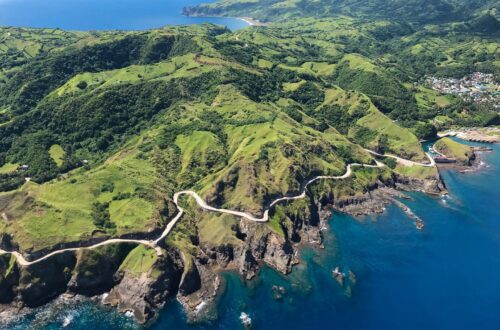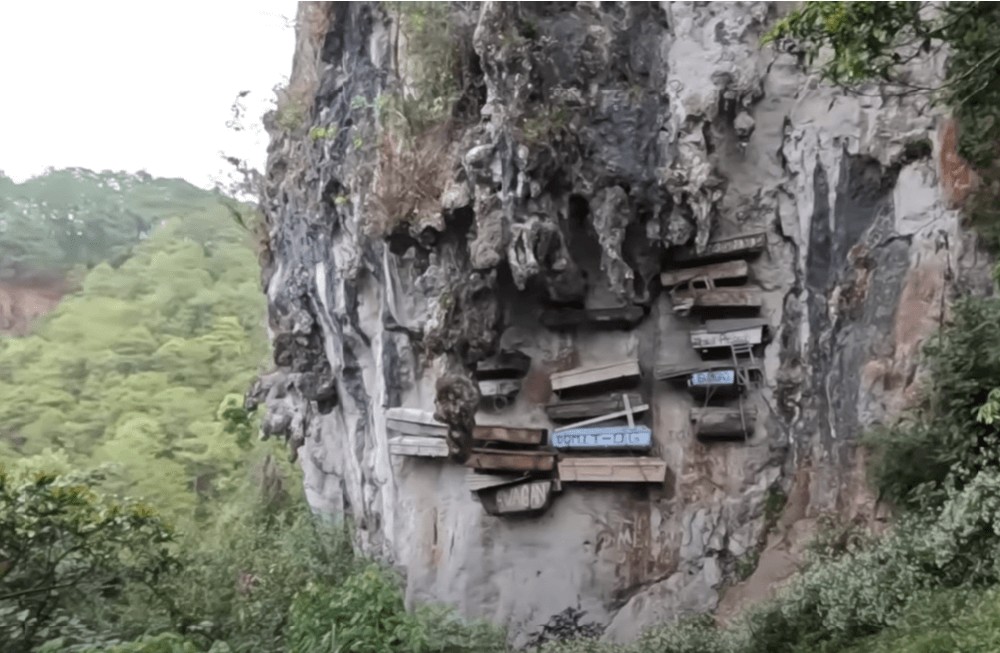
Hanging Coffins of Sagada
Introduction
Hanging Coffins of Sagada is one of the most enigmatic and captivating burial sites in the Philippines. It is tucked away in the mountains of the Northern Philippines and the sleepy municipality of Sagada which is home to the Igorot people who practice this ancient burial ritual.
According to its sublime history, the Hanging Coffins of Sagada is a traditional way of burial and its been practiced for about 500 years. A tradition that elders prefer to do and they put them in the hanging coffins or in the caves because they believe that the spirits of the dead are still in commune with the living, with villagers and with the people. Furthermore, it is also believed that the vertical burial brings the dead closer to their ancestral spirits in heaven and makes them one with nature. The tale of the hanging coffins of Sagada begins with a belief deeply rooted in the animistic traditions of the Kankanaey tribe. According to their beliefs the spirits of their departed ancestors should be placed in locations that are closer to heaven as they believe it brings the deceased soul closer to the gods. This practice was a way of showing respect and reverence for their ancestors ensuring their spirits would watch over and protect the living. The process of placing the coffins in their aerial resting places was not an easy one. The elders of the community known as mumbaki were responsible for performing the inter burial ritual. These skilled individuals possessed ancient knowledge and were tasked with choosing the right spot and orientation for each coffin. Before dawn the mumbaki accompanied by family members and other villagers would embark on a solemn journey to the designated burial cliffs carved from hollowed-out logs made from sturdy wooden planks. The coffins were carried up the treacherous mountainside through a combination of ropes ladders and sheer.
The custom is unique to Sagada as other places have stopped practicing the ritual. The last burial at one of the town’s cliffs was in year 2010. Traditionally, elders carved their own coffins from local timber and their bodies are placed inside in the fetal position in a symbolic return to where they came from, the womb. They carry the body wrapped in blanket and in a fetal position and the first person who carry that from the house are the relatives and it’s passed like a ball from the house to the burial site, because also they think or believe that when the liquid drips on you, it’s good luck. They pray during the wake, they pray for they tell the dead to continue guiding them, protecting them from any danger or guiding them so that they have a better life.
The eerie sight of the wooden Hanging Coffins of Sagada is suspended high above the ground and while there are hanging coffins in China, and also similar practices in Indonesia, there’s nothing quite like what happens in Sagada, Mountain Province. For this reason, it attracts thousands of foreign and local visitors every year despite the long drive to Sagada, Mountain Province. The tourism draw is a big boost to the municipality of Sagada and it provides a thriving livelihood for the Igorot people. A lot of foreigners come for the hanging coffins which is a different way of burial compared to a lot of places in the Philippines. They always think it’s interesting and unique and it is situated high up in the mountain, about 5,000 feet above sea level and its isolated from the city. Hanging Coffins of Sagada is a 12-hour ride from Metro Manila and tourist needs to travel all the zigzag roads and curve roads in the cliffs to reach this place because of its location which is so far from the city or other places. Nevertheless, the location helps in the preservation and the uniqueness of the place.

Name: Hanging Coffins of Sagada
Location: Mountain Province, Philippines
My trip to Hanging Coffins of Sagada
It was 9:30 am when our group arrived at the Sagada Municipal Tourist Information center to register and pay the necessary registration fee and guide fee. From there we walked towards the beautiful St. Mary’s Episcopal Church and after that we passed a hundred year old cemetery.

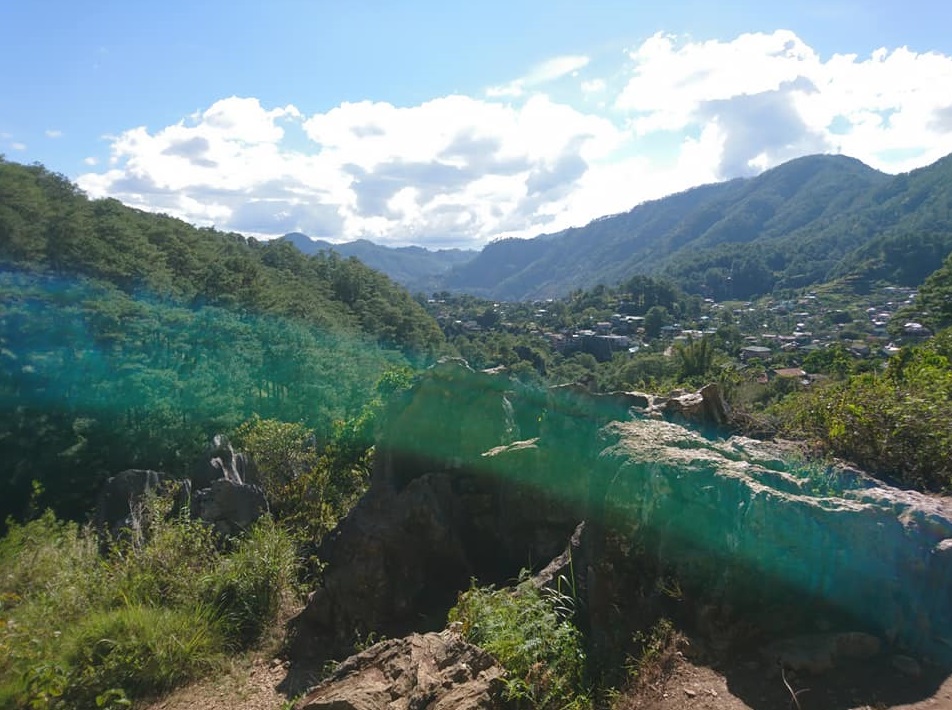
Then we passed through the pleasing Echo Valley and we saw tall trees everywhere. It owes its name to the fact that in a valley when you shout you get a good echo sound but our guide has explained us to give respect to the elders and the people that are buried here. So when we’re going down we do not shout. We go down the stairs and savor every moment because Sagada is such a unique place and so rich in culture. The views are pretty much amazing and I’m really impressed by all these cliffs and dramatic backdrops. After a few more minutes of downhill trekking we reached the famous hanging coffins of Sagada. This place gets hundreds of Filipino tourists coming from Metro Manila, Baguio City, and across the country everyday. The whole area is so nice, super peaceful and quiet though it’s just the side of the mountain forests.

Our tour guide named Joseph told us a little bit about the history of the place and said that there was no Christian religion here before the Spaniard set foot in our country. Most of the locals here believe in the spirit of nature or what they call “Anito”. They revered nature, spirits as well as the deceased ancestors for the good being. They believe they can keep in touch with their loved ones that have passed away. For this reason, the locals keep the things that belong to them as they believe that their spirits dwell in them and they find solace in that. They respect the departed souls and ask for their guidance in life. Furthermore, some of the locals here continue to exercise the rituals in spite of the fact that most people in the Philippines are Roman Catholics.
Joseph explained to us that when somebody passed away they would put it in a special chair, facing the main entrance of the building. This is where people could come and pay their respects. Once a person had been there for a couple days people had paid their respects, the place would be smoked out and then the person would be wrapped in a blanket. Just consider that this person is already decomposing and then people would carry the person in the blanket to the cliff and it was seen as good luck. If you would get blood or bodily fluids on you, it would bring luck into your life so a lot of people would be eager to carry the body to the cliff.
Now once at the cliff there were small coffins and the body would be put into the fetal position and then put into the coffin and often this will come paired with breaking of bones and then it’ll be either like nailed or hung on the side of the cliff. That is some true dedication to bury the relatives or loved ones. The higher somebody was buried the higher they were to the ancestors to the spirit world but also what was said is that the elders didn’t want to be buried in the ground because they knew that their bodies would rot very quickly so by putting them up higher and away from the wet soil, this way their body would be preserved for longer.
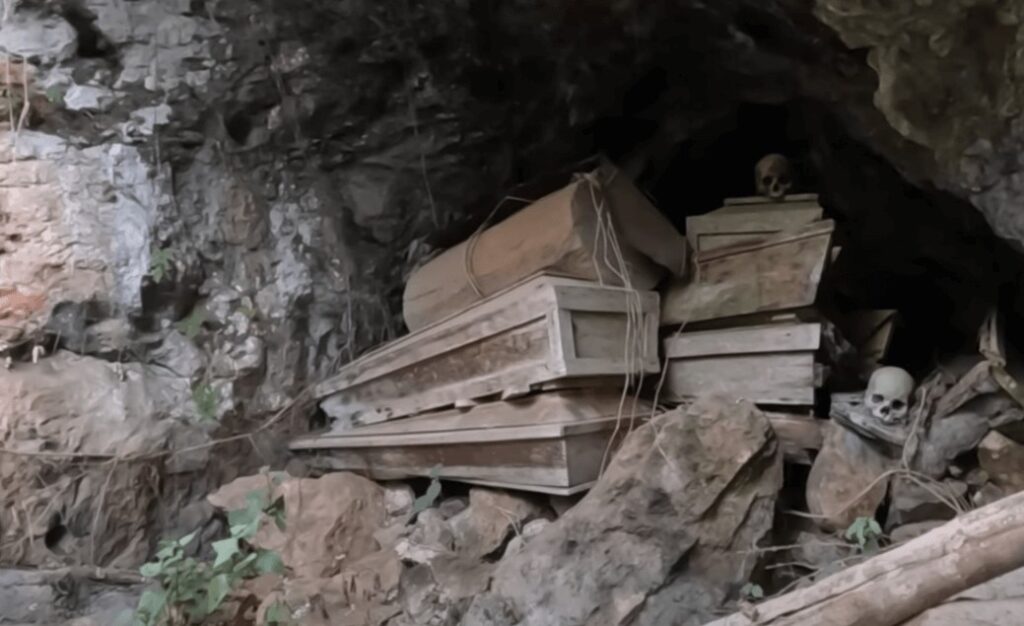
He continued and told us that the coffins that don’t get hung are being brought to the nearby cave. They just pile them up on each other and its basically still high up in the mountains on the side of a massive cliff. And then we asked our guide why there is a gate and he replied that it’s to keep people away from getting to the coffins or getting too close to the coffins. It’s like setting a boundary of respect because recently there are people who are trying to actually get into the coffin to see if there’s a body inside and someone just disrespectfully just opening the coffins.
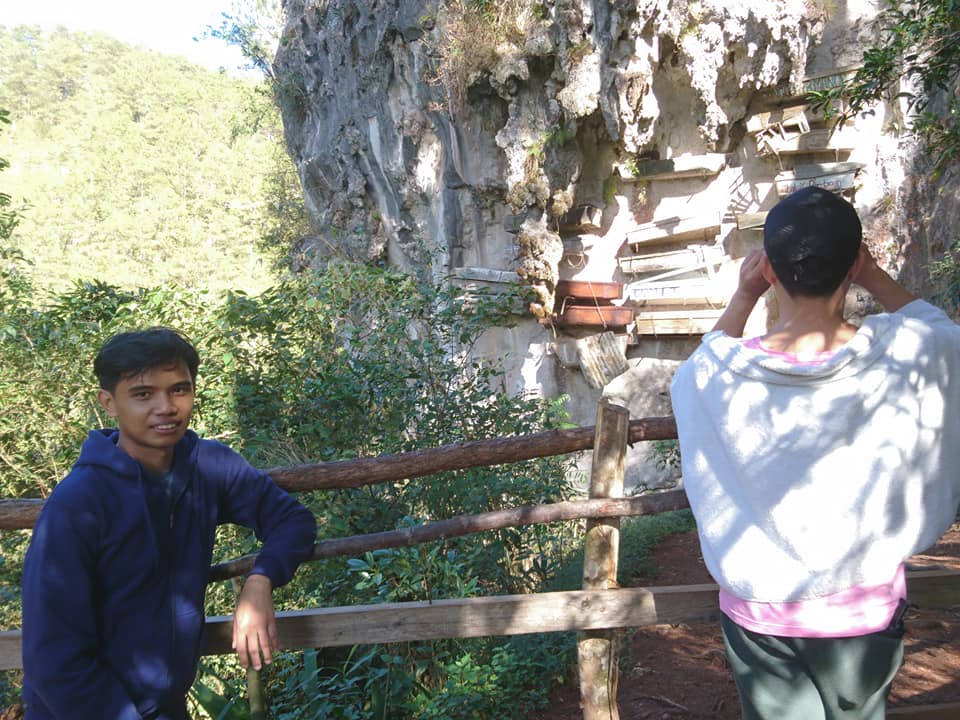
Anyway, we have a solo picture at the hanging coffins of Sagada to have a remembrance of this distinctive place. In my opinion, the unique death rituals of the mountain people of Cordillera are not for the squeamish. In all my travel experiences, this is perhaps the most interesting topic I have come across. This is quite an interesting site and I think Sagada definitely has one of the most interesting burial sites or burial histories in the world. To be honest, I love to explore unique traditions like the hanging coffins of Sagada because it reminded me of mysterious jars in Phonsavan in Laos where one of the theories says that people used to bury dead in the huge stone-made jars. Without a doubt, the world is full of fascinating burying traditions and I had a great time at the historic Echo Valley in Sagada. History-rich in every step I take and these hanging coffins are a testament to the rich cultural heritage of the Kankanaey people who have inhabited the area for centuries. Finally, I tick off one of my top bucket list and learn about the interesing and unique culture of the area and enjoy the beautiful environment of Sagada. The trip was filled with cultural and historical information that gave us a deeper understanding of the place.
How to Go to Hanging Coffins of Sagada
From St. Mary’s Episcopal Church in Sagada, walk towards the Sagada Anglican Cemetery and go down into the Echo Valley where the well known hanging coffins of Sagada can be seen. It’s a fifteen to twenty minute downhill trek.
Reminders and Tips:
- Make sure to go first to the Sagada Municipal Tourist Information Center to register yourself and hire a tour guide going to the Echo Valley or Hanging Coffins of Sagada for the safety and peace of mind.
- The registration fee or tourism fee is 100 pesos per head and the tour guide fee range from 300 pesos up to 500 pesos for a group.
- At the lowest part of Echo Valley, there’s a coffee shop called Baw-eng where the owner sells farm-to-cup coffee beside his coffee farm for 80 pesos per cup. He also sells local handicrafts and cookies.
- Always follow and listen to the tour guide. Also abstain from making irrelevant noises.
- During November, there is a celebration or more like a day when people come together at the Sagada Anglican Cemetery to burn little bonfires to remember their ancestors. It is called Panag-apoy which is a Kankanaey term which means “to light a fire”. I think it’s quite an interesting way to still include your ancestors in the physical life of now because once they’re buried we sometimes think they’re gone when in fact they are so part of our memories and I think that’s a really beautiful way of coming together and bringing up those memories which is really cool.
- Last but not least, it’s not that difficult to find things in Sagada because it’s a relatively like small area. Everything is near each other, most accommodations and most tourist spots are within eight kilometers or less. The main source of income in Sagada is tourism.
There you have it sightseer. Don’t leave the Mountain Province without visiting the Hanging Coffins of Sagada because it’s part of the touring experience and I hope you get inspired to try travelling and exploring the beautiful and amazing Sagada.



